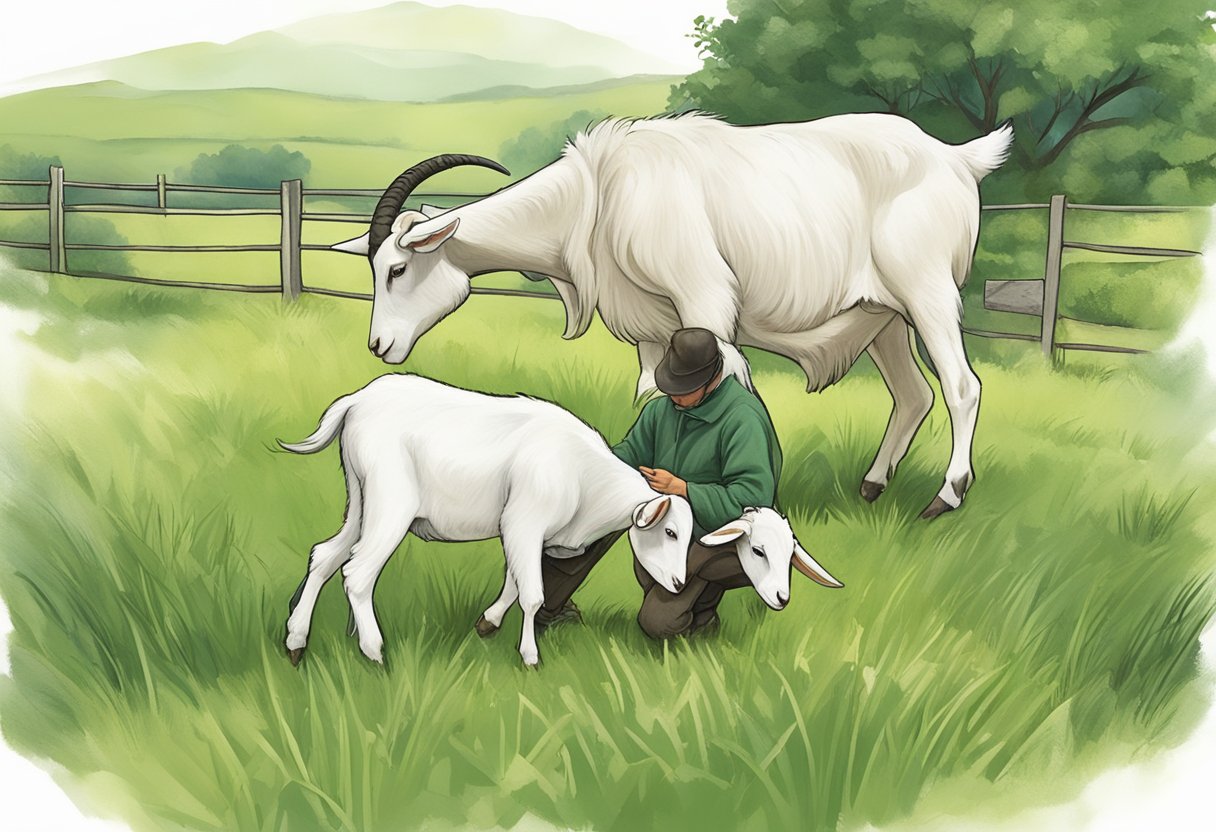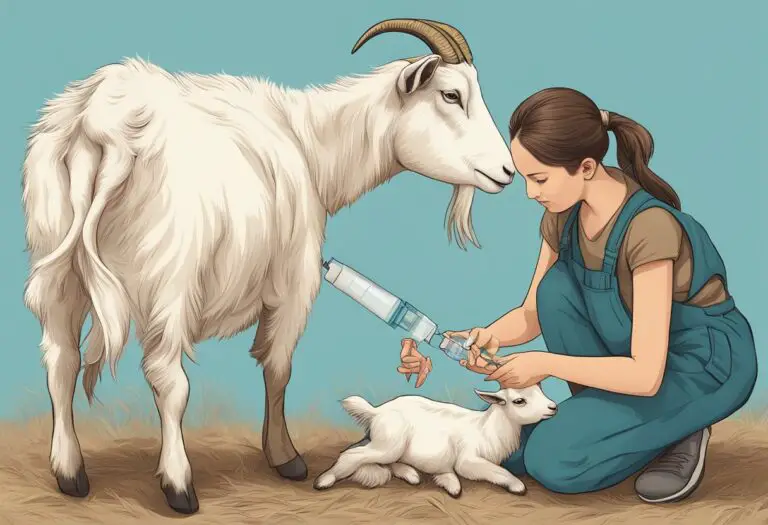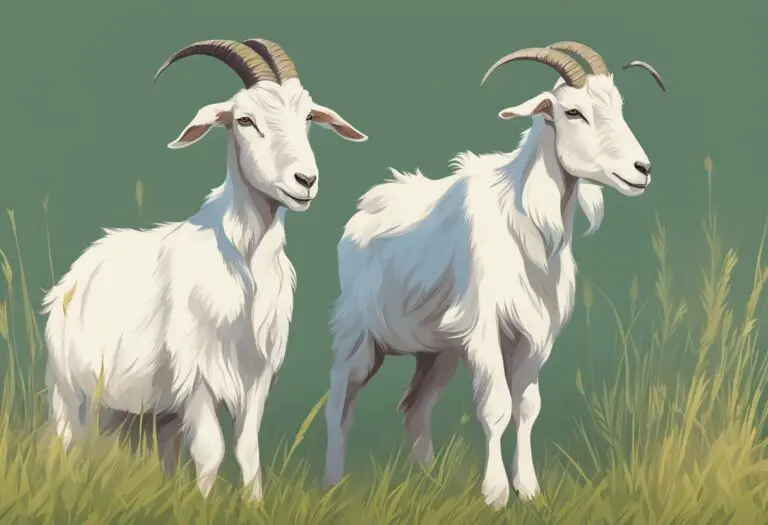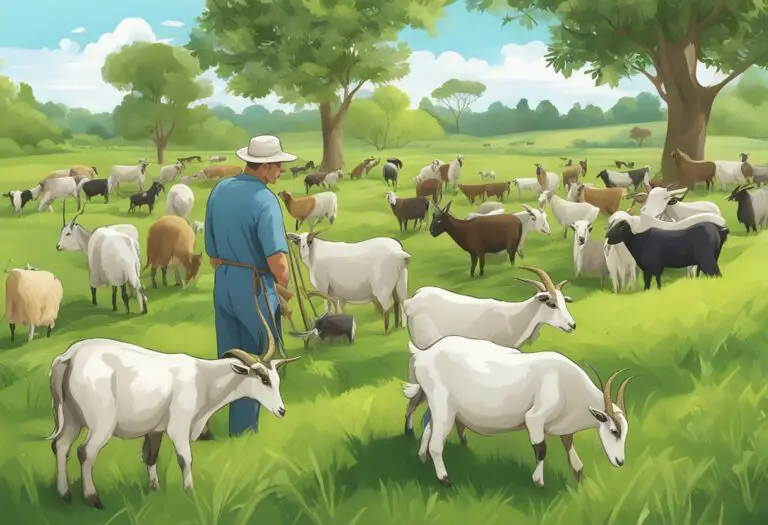How to Breed Goats for Milk: A Comprehensive Guide
Breeding goats for milk is a process that requires careful consideration and planning. Goats produce a significant amount of milk, making them a popular choice for small-scale dairy farmers and homesteaders. However, not all goats are created equal when it comes to milk production. Selecting the right breed and ensuring proper nutrition and care are essential for success.
When it comes to breeding goats for milk, the first step is selecting the right breed. Some breeds, such as the Alpine, Saanen, and Nubian, are known for their high milk production and are popular choices for dairy farmers. Other factors to consider when selecting a breed include temperament, size, and climate adaptability. It is important to research and choose a breed that is well-suited to the specific needs and conditions of the farm or homestead.
Once the breed has been selected, it is important to ensure proper nutrition and care for the goats. A diet rich in hay, grains, and minerals is essential for milk production, and goats should have access to clean water at all times. Regular veterinary care and proper housing are also important factors in maintaining healthy, productive goats. With careful selection and proper care, breeding goats for milk can be a rewarding and successful endeavor.
Understanding Goat Breeding Basics

Goat Breeds for Milk Production
When it comes to breeding goats for milk, it is important to choose the right breed. Some of the most popular breeds for milk production include Saanen, Alpine, Nubian, and LaMancha. Each breed has its own unique characteristics, such as milk production, temperament, and physical appearance. It is important to research each breed thoroughly to determine which one is best suited for your needs.
Genetics and Heredity in Goats
Understanding genetics and heredity is crucial when breeding goats for milk production. Goats inherit traits from their parents, including milk production, body size, and temperament. It is important to choose breeding stock with desirable traits to ensure that the offspring will also have those traits. Breeders can use tools such as pedigree analysis and DNA testing to determine the genetic makeup of their goats and make informed breeding decisions.
The Breeding Cycle Explained
Breeding goats for milk production requires an understanding of the breeding cycle. Female goats, or does, go through a heat cycle every 18-21 days. During this time, they are receptive to breeding and can be bred naturally or artificially. It is important to monitor the doe’s heat cycle to determine the optimal time for breeding. Once bred, the doe will carry the kid(s) for approximately 150 days before giving birth.
Breeding goats for milk production requires knowledge and careful planning. By choosing the right breed, understanding genetics and heredity, and monitoring the breeding cycle, breeders can produce high-quality milk and healthy offspring.
Setting Up Your Breeding Program

Breeding goats for milk requires a well-planned and organized breeding program. To ensure success, it is essential to establish a solid foundation for your program. This section will discuss the key elements of a breeding program and provide guidance on how to set up your program.
Selecting Breeding Stock
The first step in setting up a breeding program is to select high-quality breeding stock. This includes both male and female goats. When selecting breeding stock, it is important to consider factors such as genetics, health, and temperament. Look for goats that come from strong milking lines and have a history of producing high-quality milk. It is also important to select goats that are healthy and free from any genetic defects or diseases.
Breeding Goals and Objectives
Before starting your breeding program, it is important to establish your breeding goals and objectives. Determine what traits you want to improve in your herd, such as milk production, udder conformation, or temperament. This will help you select the right breeding stock and make informed breeding decisions.
Record Keeping and Data Management
Record keeping is an essential part of any breeding program. Keeping accurate records allows you to track the performance of your goats and make informed breeding decisions. Record data such as milk production, udder conformation, and any health issues. This information can be used to identify trends and improve your breeding program over time. Use a software program or spreadsheet to manage your data and keep it organized.
In summary, setting up a successful breeding program for milk goats requires careful planning and attention to detail. Select high-quality breeding stock, establish your breeding goals and objectives, and keep accurate records to track the performance of your goats. With a well-organized breeding program, you can improve the quality of your herd and produce high-quality milk.
Managing Goat Nutrition

Feeding for Reproductive Health
Proper nutrition is essential for breeding goats. It is important to ensure that the goats receive a balanced diet that meets their nutritional requirements. A diet rich in protein, vitamins, and minerals is necessary for optimal reproductive health. Goats should be fed a diet that is high in roughage, such as hay or pasture, and supplemented with grains and protein sources.
It is important to provide the goats with a constant supply of clean, fresh water. Water is essential for maintaining good health and reproductive function. Goats that do not have access to clean water may become dehydrated and have difficulty breeding.
Essential Nutrients for Lactating Does
Lactating does have specific nutritional requirements that must be met in order to produce high-quality milk. A diet that is high in protein, energy, and minerals is necessary for lactating does. A diet that is deficient in these nutrients can result in poor milk production and health problems for the doe.
Goats should be fed a diet that is high in roughage, such as hay or pasture, and supplemented with grains and protein sources. A diet that is high in fiber is important for maintaining good digestive health and preventing health problems such as bloat.
In addition to a balanced diet, lactating does should also be provided with a mineral supplement that is specifically formulated for goats. This supplement should contain essential minerals such as calcium, phosphorus, and magnesium, which are necessary for milk production and overall health.
Overall, managing goat nutrition is essential for breeding goats for milk. Providing goats with a balanced diet that meets their nutritional requirements is necessary for good reproductive health and high-quality milk production.
Breeding Techniques and Practices

Natural Mating
Natural mating is the most common method of breeding goats. It involves allowing the male goat to mate with the female goat naturally. The male goat should be healthy, free from diseases, and should have a good breeding history. The female goat should also be healthy and in good condition. The mating process should be monitored to ensure that it is successful. The gestation period for goats is approximately 150 days.
Artificial Insemination
Artificial insemination (AI) is another breeding technique that can be used to breed goats. This method involves collecting semen from a male goat and introducing it into the female goat’s reproductive tract using a syringe or other insemination equipment. AI can be used to breed goats with superior genetics, and it can also help to prevent the spread of diseases. However, this method requires specialized equipment and expertise.
Synchronization and Timed Breeding
Synchronization and timed breeding are techniques that can be used to increase the efficiency of goat breeding. Synchronization involves manipulating the female goat’s reproductive cycle using hormones to ensure that she is ready to breed at a specific time. Timed breeding involves breeding the female goat at a specific time based on her reproductive cycle. These techniques can be useful for breeding goats in large-scale operations or for breeding goats with specific genetic traits.
Breeding goats for milk requires careful consideration of breeding techniques and practices. Natural mating is the most common method, but artificial insemination and synchronization and timed breeding can also be useful. It is important to ensure that the breeding process is monitored and that the goats are healthy and free from diseases.
Pregnancy and Kidding

Pregnancy Care
When breeding goats for milk, it is important to ensure that the pregnant does receive proper care. This includes providing them with a balanced diet, adequate water, and a clean and comfortable living environment. During pregnancy, goats may require additional nutrition, such as extra protein and minerals, to support the growth and development of their kids.
It is also essential to monitor the pregnant does regularly for any signs of illness or complications. This includes checking their body condition score, monitoring their weight gain, and watching for any signs of distress or discomfort.
Kidding Procedures
When it comes time for the does to give birth, it is important to be prepared with the necessary supplies and equipment. This includes clean towels, gloves, lubricant, and a clean and dry area for kidding.
During the kidding process, it is important to monitor the doe closely and assist as needed. This may include helping to break the amniotic sac, clearing the airway of the kid, and ensuring that the kid is nursing properly.
Post-Kidding Management
After kidding, it is important to provide the doe and her kids with proper care and management. This includes monitoring the kids for proper growth and development, providing them with adequate nutrition, and ensuring that they receive any necessary vaccinations or medical treatments.
It is also important to monitor the doe for any signs of postpartum complications, such as mastitis or retained placenta. Regular milking and udder care are also essential to ensure that the doe produces high-quality milk and remains healthy.
Overall, proper pregnancy care, kidding procedures, and post-kidding management are essential for breeding goats for milk. By providing proper care and attention, breeders can ensure that their goats produce high-quality milk and remain healthy and productive.
Milking Management

Milking Procedures
Milking procedures are crucial to ensure the health and productivity of your goats. It is recommended to milk goats twice a day, 12 hours apart, in a clean and quiet environment. Goats should be milked at the same time every day to maintain their milk production.
Before milking, make sure to clean the udder and teats with warm water and a mild soap. Use a clean towel to dry the udder and teats thoroughly. During milking, be gentle and avoid squeezing or pulling the teats too hard, as this can cause discomfort and even injury to the goat.
After milking, apply a post-milking teat disinfectant to prevent infections. It is also important to keep track of the amount of milk produced by each goat to monitor their productivity.
Maintaining Milk Quality
Maintaining milk quality is essential for producing high-quality dairy products. To ensure milk quality, it is important to keep the milking area clean and free of dirt and debris. Goats should be kept in a clean and well-ventilated environment to prevent the spread of bacteria and other contaminants.
Milk should be stored in a clean and sanitized container at a temperature of 35-40°F to prevent spoilage. It is important to regularly test the milk for quality and safety, and to discard any milk that shows signs of contamination or spoilage.
Milking Equipment and Hygiene
Milking equipment and hygiene are important factors in maintaining the health and productivity of your goats. Milking equipment should be cleaned and sanitized before and after each use to prevent the spread of bacteria and other contaminants.
It is also important to wear clean clothing and gloves during milking to prevent the spread of bacteria from the milker to the goat. Additionally, it is important to regularly inspect the milking equipment for wear and tear, and to replace any damaged or worn parts.
By following proper milking procedures, maintaining milk quality, and ensuring milking equipment and hygiene, you can produce high-quality milk and dairy products from your goats.
Health and Wellness

Common Health Issues in Breeding Goats
Breeding goats for milk production requires special attention to their health and wellness. There are several common health issues that can arise in breeding goats, including:
- Parasites: Goats are susceptible to internal and external parasites, which can cause weight loss, anemia, and other health problems.
- Mastitis: This is a bacterial infection of the udder that can cause inflammation, pain, and a decrease in milk production.
- Pneumonia: Goats can develop pneumonia from exposure to cold, wet weather or poor ventilation. Symptoms include coughing, fever, and difficulty breathing.
It is important to monitor your goats for signs of these health issues and seek veterinary care if necessary. Regular check-ups and preventative measures can also help minimize the risk of these health problems.
Preventative Health Practices
To maintain the health and wellness of breeding goats, there are several preventative health practices that should be implemented, including:
- Vaccinations: Goats should be vaccinated against common diseases such as tetanus, clostridium perfringens, and rabies.
- Nutrition: Goats require a balanced diet with adequate protein, vitamins, and minerals to maintain their health and milk production.
- Cleanliness: Clean housing and milking areas can help prevent the spread of disease and infection.
- Parasite control: Regular deworming and flea/tick control can help prevent parasite infestations.
By implementing these preventative health practices, breeders can help ensure the overall health and wellness of their goats and maintain high milk production.
Marketing and Economics

Marketing Milk and Milk Products
Marketing milk and milk products is an essential part of the goat breeding business. The key to successful marketing is to produce high-quality milk and milk products that meet the needs of the customers. The first step in marketing is to identify the target market. Some potential customers for goat milk and milk products include health-conscious individuals, people with lactose intolerance, and those who prefer organic and locally-sourced products.
To effectively market goat milk and milk products, it is important to differentiate them from cow milk and milk products. Goat milk is naturally homogenized, making it easier to digest, and it contains more beneficial nutrients than cow milk. Goat milk is also lower in lactose, making it a suitable alternative for people with lactose intolerance.
There are various ways to market goat milk and milk products, including selling directly to consumers, selling to local stores and markets, and selling online. It is important to price the products competitively while ensuring that the business makes a profit.
Understanding the Economics of Goat Breeding
Understanding the economics of goat breeding is crucial for the success of the business. Goat breeding involves various costs, including the cost of purchasing goats, feed, veterinary care, and equipment. It is important to keep track of these costs and determine the breakeven point to ensure that the business is profitable.
One way to reduce costs is to breed goats that are well-suited to the local environment. This can reduce the need for expensive equipment and feed. It is also important to select breeding stock that produces high-quality milk and has good genetics.
Another way to maximize profits is to diversify the business by selling not only milk and milk products but also other goat-related products such as meat, wool, and hides. This can increase revenue and reduce the risk of relying solely on one product.
In conclusion, marketing and economics are crucial aspects of goat breeding for milk. By producing high-quality milk and milk products and understanding the costs and profits of the business, goat breeders can maximize their success and profitability.







